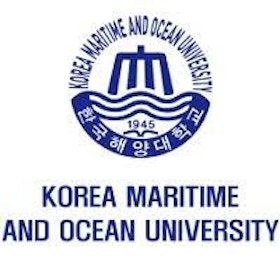Scientists achieve state-of-the-art performance in urea fuel cells using inexpensive electrodes without precious metals
Fuel cells that generate clean electricity by breaking down urea—a common organic molecule—could become a great resource to reduce dependence on fossil fuels. However, state-of-the-art catalysts for these cells require precious metals, making them prohibitively expensive for mass production. To tackle this issue, scientists explored a novel family of nanostructured catalysts made from inexpensive nickel-based compounds, paving the way for the commercialisation of accessible urea-based fuel cells.
Meeting society’s ever-increasing energy demands while also striving for sustainability goals has become a worldwide challenge, and scientists are exploring a variety of technologies to produce clean, renewable energy that can replace fossil fuels. Besides wind and solar power, electrochemical approaches using fuel cells are attractive because they represent a compact, silent, and environmentally friendly alternative to generate electricity.
Direct urea fuel cells (DUFCs) are a particular type of fuel cell that generates electricity by breaking down urea, a nitrogen-rich molecule widely applied in fertilisers and also largely present in wastewater. However, fuel cells require catalysts to function; these are carefully selected materials that facilitate the necessary chemical reactions. In the case of DUFCs, unfortunately, the best-performing catalysts known are made using precious metals, like platinum.
To tackle this limitation and find a more accessible alternative, an international research team led by Prof. Kyu-Jung Chae of Korea Maritime and Ocean University investigated a promising family of catalysts: nickel chalcogenides. The researchers used three-dimensional nickel (Ni) foam as a lightweight ‘substrate’ and then combined the outermost layer of the nickel with different chalcogen elements (oxygen, sulfur, selenium, and tellurium), producing a nanosheet of nickel chalcogenide following the complex contours of the Ni foam. They also prepared nickel phosphide (Ni–P) and nickel layered double hydroxide (Ni–LDH) in a similar fashion.
After synthesizing and characterizing the various catalysts, the team experimentally determined which one offered the best electrochemical performance, which turned out to be the one containing Ni–Se. Then, they thoroughly tested it in a real DUFC and determined what exactly gives Ni–Se an edge versus the rest, as Prof. Chae explains: “We found that selenium has a strong synergistic effect with Ni, and that the unique nanoscale morphology of the catalyst we prepared provides a high surface area to oxidise urea and enough pores to enhance mass transfer.”
The findings of this study, which was made available online on 16 July 2021 and published in volume 150 the journal Renewable and Sustainable Energy Reviews in October 2021, not only show that catalysts with different compositions can be directly grown on a lightweight support such as nickel foam, but also that nickel-based materials can be tailored to match and even outperform state-of-the-art catalysts containing precious metals. “We managed to realise a high power density in an urea-based fuel cell using inexpensive materials,” highlights Prof. Chae, “Thus, our research extends the capabilities of urea fuel cells and encourages their commercialization.”
It is worth noting that DUFCs can serve various purposes simultaneously. They can generate electricity while also helping in the treatment of urea-ridden wastewater, providing clean water in the process as well. These qualities make DUFCs a versatile option in remote places without access to a stable power grid, such as in rural areas, ships, or even space missions.
Let us hope the efforts of Prof. Chae and colleagues help pave the way to the widespread adoption of urea-based fuel cells, and on towards a brighter tomorrow.
***
Reference
Authors: Enas Taha Sayed1,2, Mohammad Ali Abdelkareem1,2,3, Ahmed Bahaa1, Tasnim Eisa4,5, Hussain Alawadhi1,6, Sameer Al-Asheh7, Kyu-Jung Chae4,5, A.G. Olabi3,8
Title of original paper: Synthesis and performance evaluation of various metal chalcogenides as active anodes for direct urea fuel cells
Journal: Renewable and Sustainable Energy Reviews
Affiliations:
1. Center for Advanced Materials Research, University of Sharjah
2. Chemical Engineering Department, Faculty of Engineering, Minia University
3. Department of Sustainable and Renewable Energy Engineering, University of Sharjah
4. Department of Environmental Engineering, Korea Maritime and Ocean University
5. Interdisciplinary Major of Ocean Renewable Energy Engineering, Korea Maritime and Ocean University
6. Department of Applied Physics and Astronomy, University of Sharjah
7. Department of Chemical Engineering, American University of Sharjah
8. Mechanical Engineering and Design, Aston University
About National Korea Maritime & Ocean University
South Korea’s most prestigious university for maritime studies, transportation science and engineering, the National Korea Maritime & Ocean University is located on an island in Busan. The university was established in 1945 and since then has merged with other universities to currently being the only post-secondary institution that specializes in maritime sciences and engineering. It has four colleges that offer both undergraduate and graduate courses.
About the author
Dr Kyu-Jung Chae is a full Professor of Environmental Engineering at Korea Maritime and Ocean University (KMOU). Before joining KMOU, he completed his PhD in environmental engineering at Gwangju Institute of Science and Technology (GIST), South Korea. He has spent over 21 years working in both academia and the industry. His understanding of the real needs in both fundamental and practical environmental research stems from his balanced experience.
Publish your content with EB Publishing
It's about who you reach. Get your news, events, jobs and thought leadership seen by those who matter to you.









